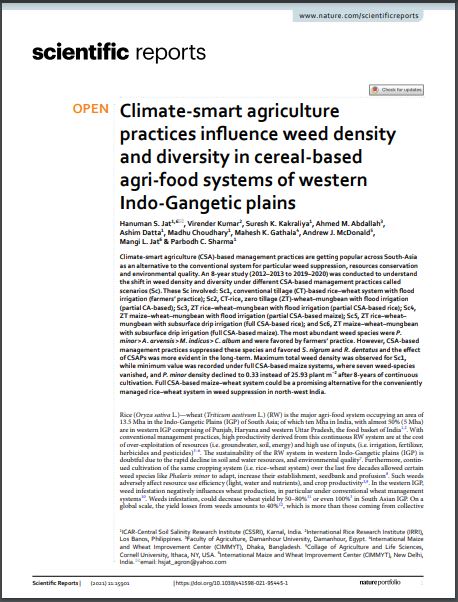Climate-smart agriculture (CSA)-based management practices are getting popular across South-Asia as an alternative to the conventional system for particular weed suppression, resources conservation and environmental quality. An 8-year study (2012–2013 to 2019–2020) was conducted to understand the shift in weed density and diversity under different CSA-based management practices called scenarios (Sc). These Sc involved: Sc1, conventional tillage (CT)-based rice–wheat system with flood irrigation (farmers’ practice); Sc2, CT-rice, zero tillage (ZT)-wheat–mungbean with flood irrigation (partial CA-based); Sc3, ZT rice–wheat–mungbean with flood irrigation (partial CSA-based rice); Sc4, ZT maize–wheat–mungbean with flood irrigation (partial CSA-based maize); Sc5, ZT rice–wheat–mungbean with subsurface drip irrigation (full CSA-based rice); and Sc6, ZT maize–wheat–mungbean with subsurface drip irrigation (full CSA-based maize). The most abundant weed species were P. minor > A. arvensis > M. indicus > C. album and were favored by farmers’ practice. However, CSA-based management practices suppressed these species and favored S. nigrum and R. dentatus and the effect of CSAPs was more evident in the long-term. Maximum total weed density was observed for Sc1, while minimum value was recorded under full CSA-based maize systems, where seven weed-species vanished, and P. minor density declined to 0.33 instead of 25.93 plant m−2 after 8-years of continuous cultivation. Full CSA-based maize–wheat system could be a promising alternative for the conveniently managed rice–wheat system in weed suppression in north-west India.

